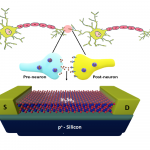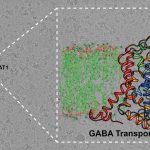
The human brain is the true superhero when it comes to processing data, an energy-efficient entity that can effortlessly make sense of unstructured information. All of this happens thanks to its complex network of neurons and their connections – the synapses.
However, things get tricky when researchers try to replicate brain function in hardware using existing technology. Most current research focuses on creating individual synapses and assembling them for computing. The challenge lies in scaling up to match the complexity of a brain, while making sure it’s not too bulky and doesn’t consume too much energy. Take for instance SpinNaker-1, a computer made using this approach. It has 100 times fewer neurons, weighs 1,000 times more, and can emulate the visual cortex of the brain. But, according to Steve Furber, its developer, if it has to be scaled up to perform like a human brain, it will require a nuclear fusion reactor to power it, and an aircraft hangar to host it.
In a new study, researchers at the Centre for Nano Science and Engineering (CeNSE), IISc, led by Pavan Nukala, have taken a novel approach to neuromorphic computing. They have harnessed the unique properties of a 2D material called hexagonal boron nitride (hBN) grown on a copper substrate with strategically decorated silver (Ag) particles to create networks that mimic the behaviour of neurons in the brain. Unlike previous approaches, this one makes entire self-organising networks within the material itself. The silver diffuses into the hBN matrix, forming the networks. Just like human neural networks, these artificial networks also exhibit a state called self-organised criticality (SOC) in which a stimulus or signal can trigger the spread of information across the entire network.
Such networks can be combined with signal processing algorithms to develop practical computing platforms. This can significantly reduce power usage in AI and computing applications. Such platforms can also help researchers better understand how the brain processes data.






